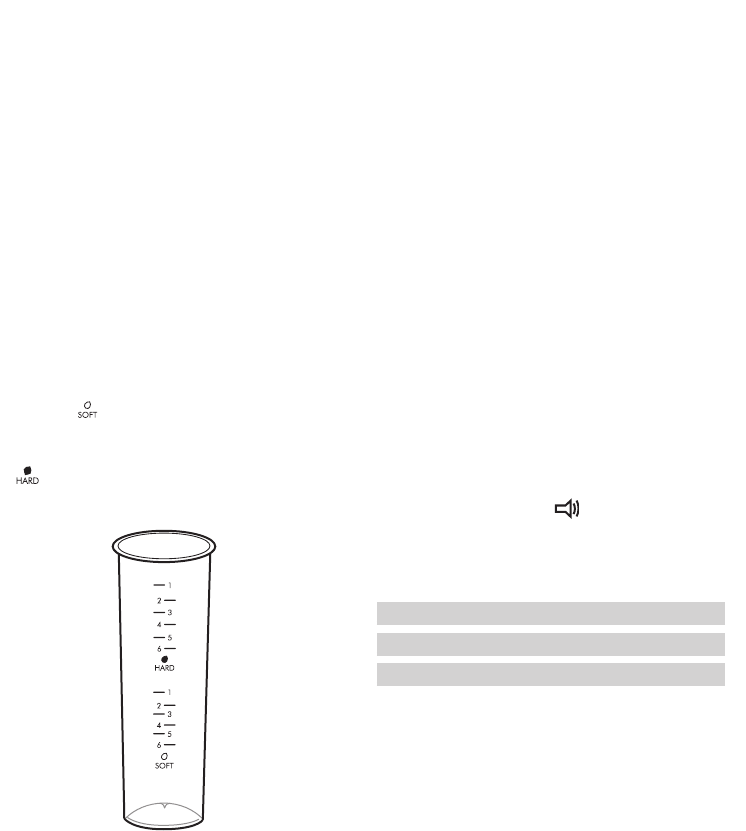
6
Boiling eggs
Before the first use
Wipe over the heating vessel with a damp
cloth. Wash the plastic parts in warm soapy
water, rinse and dry.
Boiling eggs
Up to 6 eggs can be cooked at one time.
1. Using the measuring cup, measure the
amount of water required and pour into the
heating vessel. Use cold tap water.
Eg. For 2 soft eggs, refer to the section
marked on the measuring cup and fill
the cup to the line marked 2. For 3 hard
boiled eggs, refer to the section marked
on the measuring cup and fill to the
line marked 3. See figure 1.
2. Eggs have an air pocket in the large end
of the shell and they can crack during
cooking as the air expands from the heat.
Thus piercing eggs prevents them from
cracking during cooking.
Pierce the large end of the egg using the
egg piercer which is on the underside of
the measuring cup. To do this, simply
place the large end of the egg against the
egg piercer and press the piercer into the
egg.
Important: Avoid injuries from the egg piercer.
3. Position the egg rack over the heating
vessel and place the eggs in the egg rack
with the large ends facing down.
4. Place the cover over the eggs.
Important: Ensure the steam vent faces away
from you.
5. Insert the 3 pin plug into a 230–240 volt
AC power outlet and turn the power on.
6. To commence cooking, turn the dial
to ‘cook’, or to ‘cook ’ if you wish
the buzzer to sound when cooking has
completed.
Approximately cooking times are as follows:
Soft 7 minutes
Medium 10 minutes
Hard 12 minutes
These cooking times are a guideline only.
Times will vary depending on the number of
eggs cooked, the size and the temperature of
eggs being used.
The measures on the measuring cup are
based on eggs used at room temperature.
Standard (59g) eggs have been used.
Note: You may need to add more water for
refrigerated or larger eggs.
Also eggs will be firmer if more water is used
and softer if less is used. You will quickly
learn to adjust the water level to boil eggs
just the way you want.
Figure 1


















